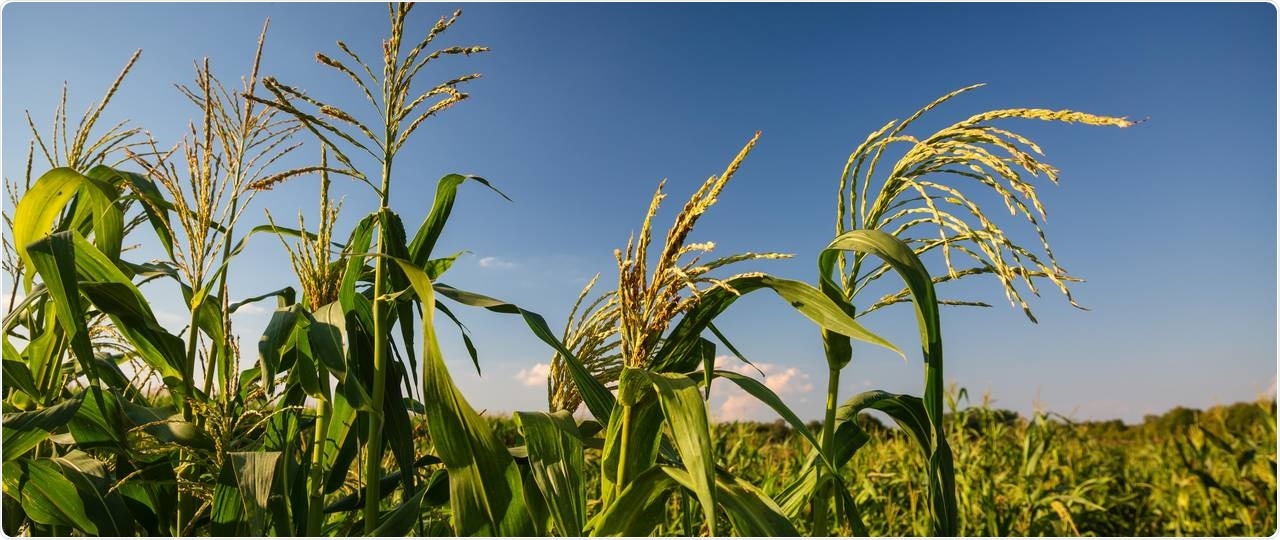Safeguarding plant production is a universal task. Researchers from the Technical University of Munich (TUM) used a mix of new molecular and statistical methods to show how material from gene banks can be used to enhance traits in the maize plant.

At various locations in Europe with different climatic conditions, the researchers in Prof. Chris-Carolin Schön’s team have cultivated old maize varieties to investigate their genetic potential. Image Credit: Tom Freudenberg.
Thus, old varieties could prove useful to breed new varieties adapted to existing and future climates.
The renowned seed vault in Spitsbergen and national gene banks store hundreds of thousands of seed samples as a means to preserve old varieties of crop plants and the genetic diversity related to them. However, there arises a question: Do these seed banks serve as gold mines or seed cemeteries?
Scientists across the world are analyzing whether stored samples contain genes that are lost through breeding, which could be useful to combat climate change. Led by Chris-Carolin Schön, Professor of Plant Breeding at the TUM, a team of researchers has now come up with a solution to tap the genetic potential of old varieties, or landraces.
Have good plant characteristics been lost through breeding?
From the 1960s, maize has been cultivated in Europe’s fields predominantly as hybrid varieties. Hybrid varieties are created by a unique breeding scheme and, for instance, are “trimmed” to achieve low susceptibility to pests or high yield per hectare.
Breeding the best variety requires a mix of characteristics that could be relevant not just today but also in the future. Thus, genetic diversity is the basic precondition for breeding enhanced crop plants.
But hybrid varieties possess only a small selection of traits than old varieties, or the landraces. So there arises a question of whether beneficial traits are also lost together with undesirable traits through many breeding generations.
Hence, recently, the call for landraces has been renewed, as they possess high biodiversity and are regarded as a natural source of new genetic variation for breeding. Genetic variation represents different variants of a gene and can be identified by differences in the appearance of the plant.
Cold-tolerant varieties: Are they the winners in times of climate change?
The early development of young plants is of specific significance during climate change. Heat and drought are the conditions that damage crops, such as maize, to a greater extent when they occur during the flowering season.
If a plant can be grown early in the year as it can cope with cold, it has already left its flowering period behind when temperatures are specifically high in summer. This implies that it is not damaged much and yield losses can be prevented.
Professor Schön and her team have been analyzing landrace varieties for cold tolerance properties. To this end, they created a genome-based technique of identifying and making targeted use of advantageous gene resources.
Following a preliminary study, where the researchers determined the genetic differences of individual varieties, three landraces were selected for cultivation in various locations with different climatic conditions within Europe.
Landraces provide advantageous genes for crop improvement
The focus of the researchers was on traits associated with early plant development and they also considered the stability of the plant (How well does it ensure wind?) and the growth form (bushy or straight?). They used molecular methods for scanning the entire genome and could link the data from the field trials to genes relevant to the particular traits.
We have shown how to find new genetic variation for important traits in agricultural production. The variation in these traits is determined by many genes and is not sufficiently available in current breeding material. This opens the door to the development of improved climate-adapted hybrid varieties.”
Manfred Mayer, Study Lead Author, Technical University of Munich
Source:
Journal reference:
Mayer, M., et al. (2020) Discovery of beneficial haplotypes for complex traits in maize landraces. Nature Communications. doi.org/10.1038/s41467-020-18683-3.